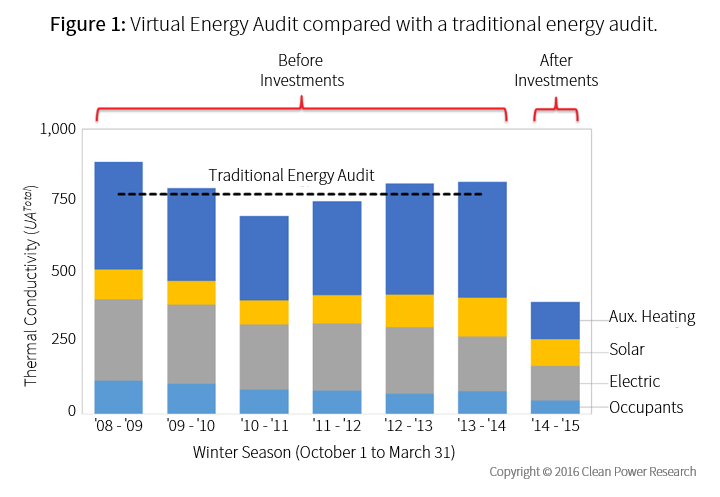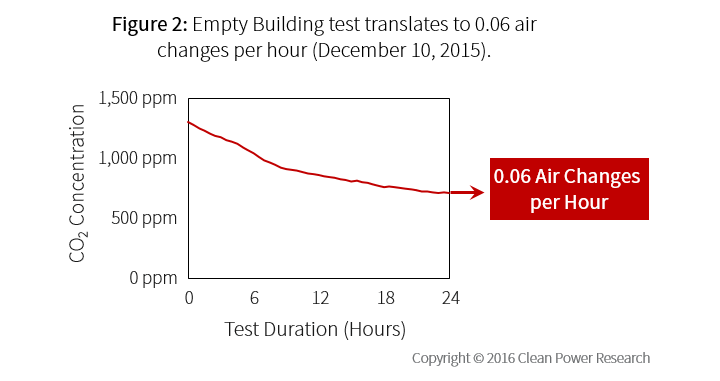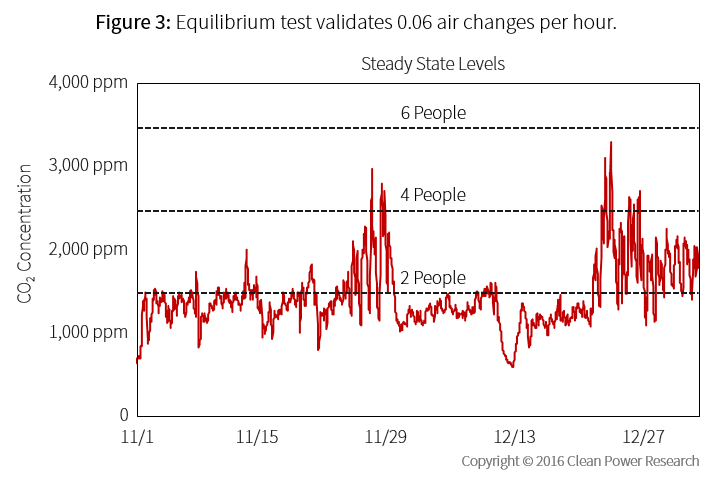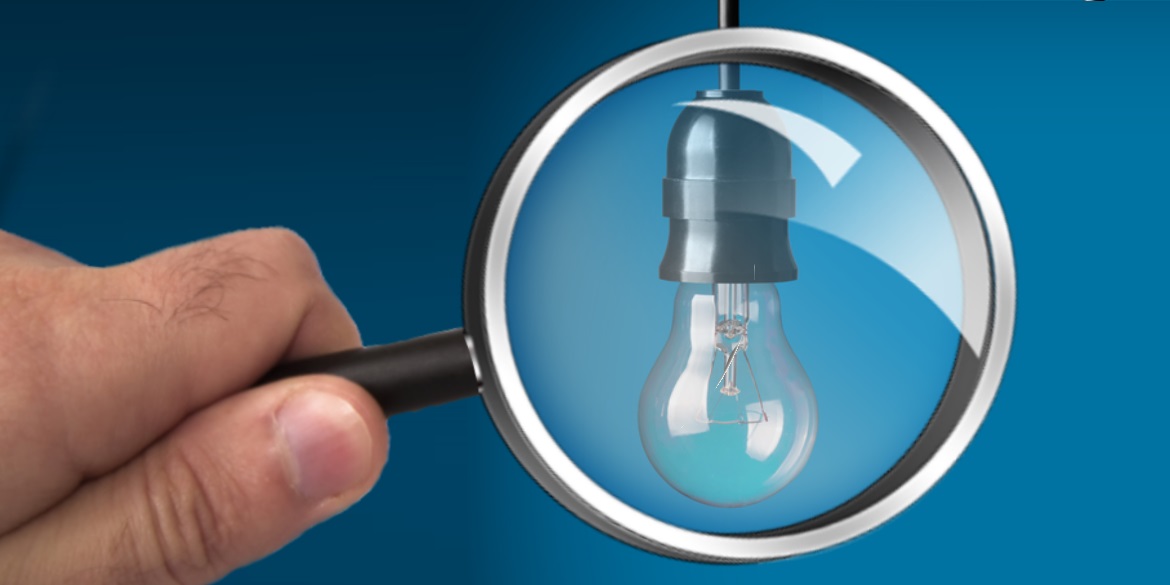This is the tenth article of an 11-part series on Solar+ homes. The series describes how homeowners can combine simple energy efficiency measures, solar PV, electric vehicles and appliance electrification to create households that are fully powered by solar electricity—even in existing homes. A Solar+ home provides substantial economic and environmental savings to the homeowner, and creates load profiles that are low-cost for utilities to serve.
Measuring the effectiveness of your home’s thermal conductivity
Previous articles in the Solar+ homes series described how HVAC fuel consumption is related to envelope gain; however, the articles did not describe how to measure conduction and infiltration. In this article, we’ll describe a simple, inexpensive method for measuring the effectiveness of your home’s thermal conductivity.
As we learned in previous posts, envelope gain is based on thermal conductivity, and thermal conductivity is defined by conduction and infiltration rates. Conduction and infiltration are typically estimated using an on-site home energy audit. In traditional energy audits, conduction is estimated by measuring surface areas and estimating R-values for each surface. Infiltration is estimated using a blower door test and estimating building volume.
Home energy audits yield valuable information about the efficiency of a house. Traditional energy audits, however, are expensive, time-consuming and intrusive. Consider, for example, the challenges with the blower door test:
- The test requires specialized equipment and trained personnel.
- The test is intrusive to consumers: Trained personnel must come to the consumer’s home, open a door for an extended period of time, go throughout the home and place airtight covers over all the HVAC vents, and run a noisy fan.
- It’s easy to make calibration errors that invalidate the test.
- It can cost several hundred dollars to perform the test.
Finally, results from traditional energy audits need to be translated from high pressure conditions to actual operating conditions using an approximation to estimate actual infiltration losses. That is, the results are still just estimates even after all the work has been performed because they need to be converted to actual conditions.
An empirical, non-invasive, low-cost approach to energy audits
At Clean Power Research, we’ve developed an alternative to the traditional home energy audit. It’s an empirical, non-invasive, low-cost approach that consists of two steps:
- A Virtual Energy Audit™
- A Lean Energy Audit
This audit method is empirical because it’s based on measured data versus estimating results. It’s non-invasive because the first step requires no onsite measurements, and the second step only requires a small, unobtrusive device. It’s low-cost because the device required in the second step is inexpensive.
The two-step approach directly measures conduction and infiltration. The Virtual Energy Audit measures the combined effects of infiltration and conduction. The Lean Energy Audit measures infiltration. Measured conduction is obtained by subtracting measured infiltration (Lean Energy Audit results) from measured infiltration plus conduction (Virtual Energy Audit results).
The Virtual Energy Audit
The Virtual Energy Audit is performed using measured energy consumption data and weather data. The energy consumption data is obtained from customer utility bills, and the weather data is available at SolarAnywhere.com. Assumptions or inferred values include:
-
- Average number of occupants.
- Average indoor temperature.
- Effective window area and HVAC efficiency.
The data can be combined to assess the overall performance of the house. Figure 1 shows the results of the Virtual Energy Audit that was performed at the prototype house. Results from a traditional energy audit that was also conducted on the prototype house are included for comparison purposes.

The figure shows that results from the Virtual Energy Audit and traditional energy audit are comparable. The figure also shows that the effectiveness of the Solar+ home building shell investments can be verified.
The Lean Energy Audit
The Lean Energy Audit is based on measured data from a simple, unobtrusive device placed in the home. Infiltration is the amount of air flowing through the house. It equals the number of air changes per hour times the volume of the house. The device measures infiltration based on carbon dioxide concentration using an “Empty Building” test. Results can be validated using an “Equilibrium” test.
The Empty Building test requires people to leave for a short period of time. Figure 2 presents carbon dioxide concentration data on a day when the home was vacated.

The home had 0.06 air changes per hour, making this a very efficient home. Note that the test can actually be performed in about an hour even though the plot presents 24 hours. The Equilibrium test is based on long-term, steady-state conditions. Figure 3 validates the accuracy of the Empty Building test results.

In addition, a few short-duration tests can be run to verify effective window area, HVAC efficiency and thermal mass. Longer-term data from the device can be used to calculate average indoor temperature and occupancy over a season.
Key Takeaway
The Virtual Energy Audit and Lean Energy Audit are alternatives to the traditional home energy audit. They can be effectively employed to assess building performance. The result is an empirical, non-invasive, low-cost energy audit approach.
Don’t miss the next article in the series! Subscribe now to receive future updates about Solar+ homes.
To go to the next article in the Solar+ homes series, click here.
To go to the previous article, click here.
To jump to the first article in the series, click here.
